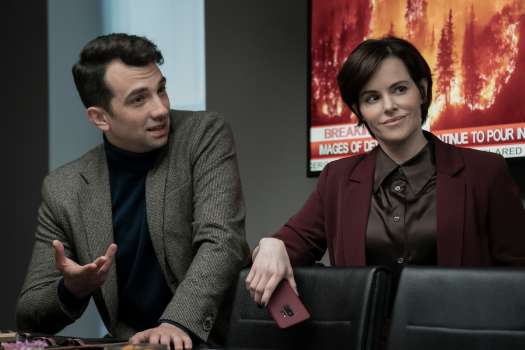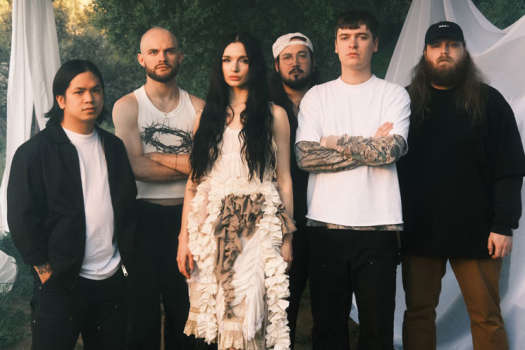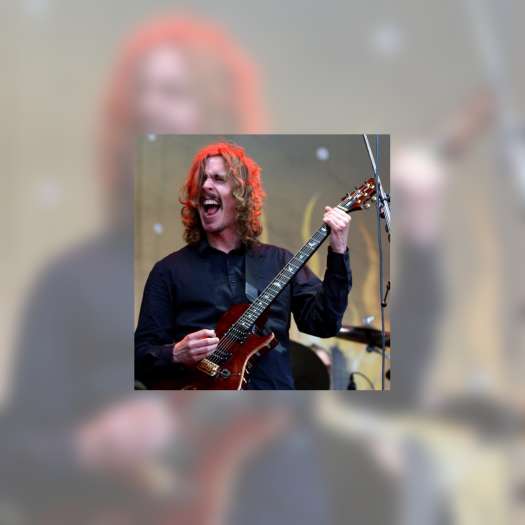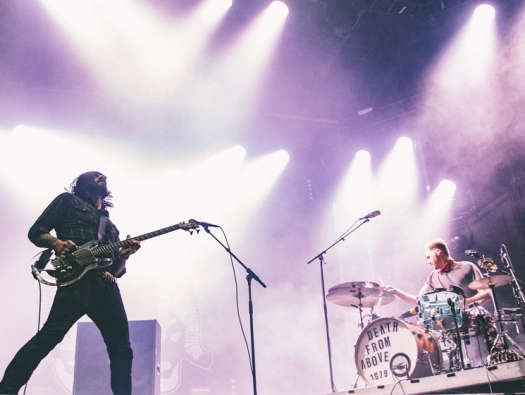Neither time nor trends nor the frequent indifference (and occasional hostility) of the British music press have caused High Llamas linchpin Sean O'Hagan to stray from the singular path he set upon close to 20 years ago. At a time when Nirvana and Pearl Jam were widely considered the epitome of sonic rebellion, he proposed something genuinely radical: unashamedly pretty, complexly arranged songs that drew inspiration from the then-unfashionable likes of Burt Bacharach, John Cale, and post-surf Beach Boys. Alongside friends and collaborators Stereolab, the High Llamas trail blazed indie music's appropriation of classic pop and various strains of so-called "easy listening," from bossa nova to vintage film soundtracks. (Subsequently, O'Hagan became an in-demand string arranger for artists eager to acquire some of the Llamas' symphonic majesty.) Following a brief, ill-fated tenure with a major label in the late '90s, the Llamas ― O'Hagan and a core group, plus a revolving guest cast ― established an enduring relationship with the Drag City label, for which they've made a series of consistently strong albums that stand alone amidst the landscape of contemporary music. Shortly before the release of Talahomi Way, the High Llamas' ninth album (and, arguably, their best since the 1999 masterpiece Snowbug), O'Hagan corresponded with Exclaim! via email from his home in London.
Compared to earlier High Llamas albums, the last few have had in common a much sparser, more intimate sound. But Talahomi Way seems to have more elements and textures. It also seems appropriately timed for spring. Were you thinking bigger and brighter?
Talahomi Way is a spring record ― always was throughout the year it took to make it. We agreed that after the space we gave ourselves on [2003's] Beet Maize & Corn, it was time to engage in the playfulness of arranging, and we attempted to introduce more sounds ― a nice clutter and a trail of ideas that should leave the listener happily confused on first listen, only to find the logic of the music on a return visit. I'm ever the fan of harmony and, though perhaps the chords have changed over the years, the quest for surprise in the turn of a chord is still there. I'm amazed that after 20 years or so, I still have an appetite to engage with these ideas, but I'm simply still fascinated by chords, melody and sounds.
Each High Llamas record has, to some extent, been shaped by the music you were especially enthusiastic about while making it, like Dorothy Ashby and Laura Nyro for Can Cladders (2007), and Brazilian music and '60s harmony pop on Snowbug. What was the inspirational soundtrack this time around?
We can't write this stuff in isolation. Every writer should acknowledge their imagined mentors ― it's part of the evolution of ideas. For Talahomi Way, I was listening to Chico Buarque, Tom Jobim, and British jazz experimentalists like Basil Kirchin and Kenny Graham; these guys wrote big-band music in the '50s and early '60s but then switched to odd arrangements ― quite freeform ― in the late '60s. Also, though I don't subscribe to the idea of "growing up" and understanding classical music, I've been listening to a lot of impressionist music: Ravel, Delius, Butterworth, Frank Bridge. This is all small ensemble music. I'm not a fan of large orchestration. I love quartets.
You live in London, yet High Llamas records increasingly seem defined by their lack of what most people associate with urban character. Is part of the purpose of making your music to fulfil a fantasy of living a quieter, less complicated life?
I think the lack of urban character in our music might be down to the obvious lack of a backbeat, of strapped-down meter. Our music, though arranged, has a fluidity and a happy, shambolic roll. I write a lot of my tunes in [the south of Wales] in the summer, when we camp in the lap of green Welsh beauty overlooking the ocean. Lyrically, I address the quiet normality of the life of a building or a moment at an intersection ― a small moment, barely acknowledged ― the comfort of community in the face of the savage assault by the private sector on anything that's not quantifiable or monetized. The public sector is being demonized by the financial sector because the unravelling of the old structures is obvious, and finance wants to cut and run and protect the rich. My songs, hopefully, give value to the life beyond finance ― a life that has no reflection in wealth.
When I first interviewed you, in 1994, you were struggling to find a niche and to be taken seriously amidst the onslaught of grunge and the first stirrings of Britpop. In the grand scheme of popular music, you've always been an outsider, but do you feel less like a misfit now?
I think we're referred to now as "unswerving," "institutional," "uncompromising" ― all nice things. The story is, "They created their own world, right or wrong." We're rarely called upon now to explain our choices in style, and more often what we do is accepted. The meanness and anger that some writers couldn't help but reveal has gone. Also, in the last 15 years there have been artists who've cited us as an influence, which is fantastic. It makes you feel wanted.
Compared to earlier High Llamas albums, the last few have had in common a much sparser, more intimate sound. But Talahomi Way seems to have more elements and textures. It also seems appropriately timed for spring. Were you thinking bigger and brighter?
Talahomi Way is a spring record ― always was throughout the year it took to make it. We agreed that after the space we gave ourselves on [2003's] Beet Maize & Corn, it was time to engage in the playfulness of arranging, and we attempted to introduce more sounds ― a nice clutter and a trail of ideas that should leave the listener happily confused on first listen, only to find the logic of the music on a return visit. I'm ever the fan of harmony and, though perhaps the chords have changed over the years, the quest for surprise in the turn of a chord is still there. I'm amazed that after 20 years or so, I still have an appetite to engage with these ideas, but I'm simply still fascinated by chords, melody and sounds.
Each High Llamas record has, to some extent, been shaped by the music you were especially enthusiastic about while making it, like Dorothy Ashby and Laura Nyro for Can Cladders (2007), and Brazilian music and '60s harmony pop on Snowbug. What was the inspirational soundtrack this time around?
We can't write this stuff in isolation. Every writer should acknowledge their imagined mentors ― it's part of the evolution of ideas. For Talahomi Way, I was listening to Chico Buarque, Tom Jobim, and British jazz experimentalists like Basil Kirchin and Kenny Graham; these guys wrote big-band music in the '50s and early '60s but then switched to odd arrangements ― quite freeform ― in the late '60s. Also, though I don't subscribe to the idea of "growing up" and understanding classical music, I've been listening to a lot of impressionist music: Ravel, Delius, Butterworth, Frank Bridge. This is all small ensemble music. I'm not a fan of large orchestration. I love quartets.
You live in London, yet High Llamas records increasingly seem defined by their lack of what most people associate with urban character. Is part of the purpose of making your music to fulfil a fantasy of living a quieter, less complicated life?
I think the lack of urban character in our music might be down to the obvious lack of a backbeat, of strapped-down meter. Our music, though arranged, has a fluidity and a happy, shambolic roll. I write a lot of my tunes in [the south of Wales] in the summer, when we camp in the lap of green Welsh beauty overlooking the ocean. Lyrically, I address the quiet normality of the life of a building or a moment at an intersection ― a small moment, barely acknowledged ― the comfort of community in the face of the savage assault by the private sector on anything that's not quantifiable or monetized. The public sector is being demonized by the financial sector because the unravelling of the old structures is obvious, and finance wants to cut and run and protect the rich. My songs, hopefully, give value to the life beyond finance ― a life that has no reflection in wealth.
When I first interviewed you, in 1994, you were struggling to find a niche and to be taken seriously amidst the onslaught of grunge and the first stirrings of Britpop. In the grand scheme of popular music, you've always been an outsider, but do you feel less like a misfit now?
I think we're referred to now as "unswerving," "institutional," "uncompromising" ― all nice things. The story is, "They created their own world, right or wrong." We're rarely called upon now to explain our choices in style, and more often what we do is accepted. The meanness and anger that some writers couldn't help but reveal has gone. Also, in the last 15 years there have been artists who've cited us as an influence, which is fantastic. It makes you feel wanted.




